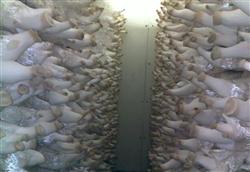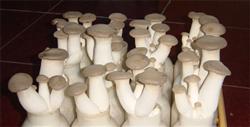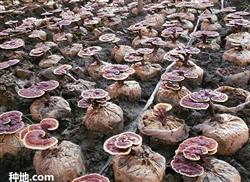How to manage the cultivation of Pleurotus eryngii?

How to manage the cultivation of Pleurotus eryngii? Pleurotus eryngii is a kind of rare and large fleshy umbrella fungus with good quality, with thick meat, slow opening of umbrella, fine and strong stalk tissue, white and thick, few spores, long shelf life, delicious taste, excellent taste and good market prospect. 1. Growth and development conditions Pleurotus eryngii is a low-temperature edible fungus, the optimum temperature for mycelial growth is 25 ℃, and the optimum temperature for bud formation is 12 ℃ 15 ℃. It is difficult to produce mushroom buds below 8 ℃, and it is difficult to produce mushrooms when they are higher than 20 ℃. The suitable mycelial culture material is 60% water content and 70% relative humidity. The relative humidity at the stage of mushroom bud formation and growth stage is 85% and 95%, respectively. The mycelium growth stage does not need light, and the mycelium growth rate is faster under dark conditions. Certain scattered light is required for the formation and development of mushroom buds. Too bright, the hyphae blackened, too dark, the cap became white, and the stalk was longer. In the stage of mycelial growth, carbon dioxide can promote the growth of mycelium. In the stage of primordium formation, sufficient oxygen is needed to make the mushroom bud grow normally. The optimum pH value of culture material in the stage of mycelial growth was 6.5 ml 7.5, and the optimum pH value during mushroom emergence was 5.5 mi 6.5. Second, cultivation techniques 1. Culture materials: cottonseed hull and sawdust can be selected as the main cultivation nutrients, and the reference formula is sawdust 47%, cottonseed hull 30%, wheat husk 20%, sugar 1%, calcium carbonate 1.5%, lime 0.5%. The sawdust must be screened to prevent it from breaking the cultivation bag. The satisfactory yield benefit can be obtained by adding wheat husk and corn flour. two。 Cultivation method: at present, it is mainly planted in clinker bags, and the suitable size of the cultivation bag is 33 cm × 17 cm polypropylene bag or 20 mi 24 cm × 40 mi 45 cm bacterial tube. At the same time, it is necessary to strictly check whether the cultivation bags are sealed to prevent the invasion of miscellaneous bacteria from the damaged outside after sterilization. 3. Cultivation time: under natural conditions, it is more suitable to be inoculated at the end of autumn (mid-late October). It is difficult to form fruiting body if the temperature is too low or too high, and it is difficult to produce mushrooms when the temperature is below 10 ℃ or above 18 ℃. It is particularly important to arrange the suitable local cultivation season according to the suitable temperature for mushroom production. 4. Cultivation management: the mycelium can be promoted to produce mushrooms after the mycelium grows in a full bag, and the humidity of the cultivation room can be kept at 85% Mel 95% by spraying water spray on the space and the ground. Generally, mushroom buds can appear after 15 mi 20 days. The cultivation of Pleurotus eryngii should be mastered in the period from the formation of primordium to the emergence of buds, when the primordium differentiation and the development of Pleurotus ostreatus are normal, the mushroom is neat, and the commercial property of mushroom body is good. When the mycelium is not twisted, the bag is opened, it is difficult to form primordium or slow to form primordium, the mushroom is not neat, and the commercial property of mushroom body is poor. When the fruiting body is larger, deformed mushrooms will appear in the bag, and when it is serious, it will shrink and rot. The speed of budding has a lot to do with heat preservation. When the temperature is 13 mi 15 ℃, the mushroom is the fastest, the mushroom bud is more, the mushroom is neat, and it can be harvested in about 15 days. The mushroom bud will not form when the temperature is below 8 ℃, even if the elongated fruiting body will stop growing and gradually shrink and die. It is also difficult to bud at 20 ℃, and the mushroom buds that have been formed will shrink and die. In order to prolong the shelf life of the fruit body, 3 days before harvest, the humidity should be controlled at about 85%. In the process of management, we should be careful not to spray water on the mushroom body. When the temperature is high, water on the mushroom body will cause yellowing and bacteria infection will cause mildew. The formation and growth of fruiting body need fresh air, good ventilation, many mushroom buds, high yield, normal opening of mushroom buds and large blossoms. 5. Harvest: the suitable time for harvest is that the cover is flat and the spores have not yet ejected. The harvest standard is determined according to the needs, and the export mushroom requires a cap diameter of 4mm, a stalk length of about 10cm and a stalk thickness of 2cm. The second tide mushroom can be harvested about 15 days after harvest. Click to get more cultivation techniques of Pleurotus eryngii
- Prev

How to manage the temperature of cultivated Pleurotus eryngii?
How to manage the temperature of cultivated Pleurotus eryngii? Please introduce in detail that Pleurotus eryngii is a medium-and low-temperature constant-temperature fruiting mushroom. The optimum temperature for mycelium growth is 21: 26 ℃, the temperature for fruiting body growth is 8: 20 ℃, and the optimum temperature for growth is 12-16 ℃. It is difficult for fruiting bodies to differentiate below 8 ℃. In winter, the outside temperature is generally lower than 15 ℃.
- Next

Seeking: planting technology of Ganoderma lucidum
How to grow Ganoderma lucidum? What should be paid attention to when planting Ganoderma lucidum? Ganoderma lucidum, alias Ganoderma lucidum, etc., has the effects of nourishing strength, anti-inflammation and expectoration, relieving cough and asthma. The production of bottle (or bag) Ganoderma lucidum is relatively simple and easy to learn. First, the preparation of nutrients ① sawdust about 75%, wheat bran about 25%.
Related
- Fuxing push coffee new agricultural production and marketing class: lack of small-scale processing plants
- Jujube rice field leisure farm deep ploughing Yilan for five years to create a space for organic food and play
- Nongyu Farm-A trial of organic papaya for brave women with advanced technology
- Four points for attention in the prevention and control of diseases and insect pests of edible fungi
- How to add nutrient solution to Edible Fungi
- Is there any good way to control edible fungus mites?
- Open Inoculation Technology of Edible Fungi
- Is there any clever way to use fertilizer for edible fungus in winter?
- What agents are used to kill the pathogens of edible fungi in the mushroom shed?
- Rapid drying of Edible Fungi

